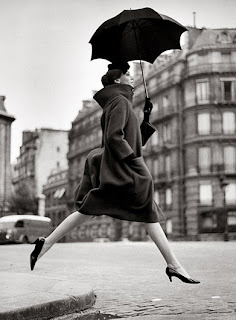was born in new york on may 15, 1923 of russian-jewish
immigrant parents.
he attended dewitt clinton high school in the bronx,
but never completed an academic education.
in 1940, at age 17, avedon dropped out of high school
and joined the merchant marine's photographic section,
taking personnel identification photos. later, he went on
several missions to photograph shipwrecks.
upon his return in 1944, he found a job as a photographer
in a department store. Initially, avedon made
his living primarily through work in advertising.
as a staff photographer for harper's bazaar and later
for vogue, avedon became well known for his stylistically
innovative fashion work, often set in vivid and surprising
locales.
Richard Avedon (1923-2004) is considered of one of the greatest American photographers. He is the first, who breaks the barrier between studio and reporting photography. For most of 50 years Avedon was one of the most significant names in the fashion. He is author of the first retrospective exhibition, devoted to one person. With this first activity Avedon makes his application that with the unbelievable quantity works and with his unique image he will become inseparable part of the history of the photographer art.
‘if a day goes by without my doing something related to
photography, it’s as though I’ve neglected something
essential to my existence, as though I had forgotten to
wake up,’ he said in 1970.
portraits
although avedon first earned his reputation as a fashion
photographer, his greatest achievement has been his
reinvention of the genre of photographic portraiture.
his ability to express the essence of his subject.
avedon’s pictures continue to bring us a closer, more
intimate view of the great and the famous.
the portraits are often well lit and in front of white backdrops,
with no props or extraneous details to distract from their
person - from the essential specificity of face, gaze, dress,
and gesture. when printed, the images regularly contain
the dark outline of the film in which the image was framed.
avedon's photographs confront us with miners, unemployed
people, drifters, farmers, cowboys, and convicts, often at
life-size or over. most of those photographed try to give as
little of themselves away as possible. they appear to show
no feelings beyond scepticism and reserve. in the bar,
or at the rodeo, or wherever avedon has found them
they may have been emotionally involved, cheerful,
uninhibited, stressed or sad: but in front of his camera,
they appear totally inward.
there is barely a trace of the theatrical expressiveness or the
extravagant gestures that avedon elicits from the actors,
singers or writers who sit for him. these portraits are
expressive nevertheless. their hard physical labour, the
harshness of their everyday lives, their struggle for survival,
has etched their features and their souls as a river gouges
out a canyon. their faces become landscapes, and their bodies
territories, on which they carry their garments around with them.
---
fame
in 1989 received an honorary doctorate from the
royal college of art in london and in 1992 he became the
first staff photographer for the new yorker.
‘the world’s most famous photographer’ trumpeted a 2002
story on avedon in the new york times. it was a title he wore for
decades. back in 1958, he was named one of the world’s 10
finest photographers by popular photography magazine
(he was also reputed to be the world’s highest-paid
photographer). in 2003, he received a national arts award for
lifetime achievement.
---
among his most recent exhibitions:
in 1994 the whitney museum in new york brought together
fifty years of his work in the retrospective,
‘richard avedon: evidence’.
in 2001 the kunstmuseum wolfsburg, in germany staged
‘richard avedon: in the american west’.
this exhibition showed, for the first time in europe, the full
sequence of 124 portraits of the working class people of the
american west, which avedon took between 1979 and 1984
on a commission from the amon carter museum in
fort worth, texas.
in 2002 the metropolitan museum of art in new york
featured approximately 180 works
‘richard avedon: portraits’.
he chose his subjects among people who interested him,
instead of photographing people on commission.
all were shot against a white background, without any of the
typical poses or smiling faces.



რიჩარდ ევედონი დაიბადა ნიუ-იორკში ებრაულ-რუსულ ოჯახში.ის დადიოდა DeWitt Clinton High School-ში,ბრონქსში,სადაც მუშაობდა ჯეეიმს ბოლდვინთან ერთად.კოლუმბიის უნივერსიტეტში სწავლობის შემდეგ 1942 წელს მან საზღვაო ვაჭრების ფოტოგრაფობა დაიწყო.მოგვიანებით მამისგან მიიღო საჩუქარი კერძოდ Rolleiflex კამერა.
1944 რიჩარდმა დაიწყო მუშაობა სარეკლამო ფოტოგრაფად,მაგრამ მალევე იქნა აღმოჩენილი ჟურნალ ჰარპერის ხელოვნების დირექტორის ალექს ბროდვიჩის მიერ.1944-ში ევედონმა ცოლად მოიყვანა დორკას ნოუელი.(რომელიც მოგვიანებით მოდელი გამოვიდა).ქორწინებიდან 5 წლის შემდეგ ნოუელი და რიჩარდი ერთმანეთს დაშორდნენ.
1946 წელს ევედონმა გახსნა საკუთარი სტუდია და დაიწყო ფოტოების გადაღება ჟურნალებისთის,მათ შორის Vogue and Life.
1951 წელს რიჩარდმა მეორეჯერ მოიყვანა ცოლი ამჯერად ეველინ ფრანკლინი,რომლისგანაც შეეძინა ვაჟი ჯონ ევედონი.
1966 წელს რიჩარდმა Harper’s Bazaar დატოვა და გახდა ჟურნალ Vogue-ს პერსონალური ფოტოგრაფი.
ევედონი 1992 წელს გახდა პირველი ნიუ-იორკელი ფოტოგრაფი.მას მოგებული აქვს არაერთი პრიზი,მათ შორის: International Center of Photography Master of Photography Award 1993 წელში, the Prix Nadar-ის პრიზი 1994-ში და the Royal Photographic Society 150th Anniversary Medal 2003 წელს.
2004 წლის 13 მარტს გარდაიცვალა მისი მეორე ცოლი ეველინ ფრანკლინი.
2004 წლის 1 ოქტომბერს კი რიჩარდ ევედონი გარდაიცვალა ტვინის დაავადებით სან ანტონიოში(ტეხასი)




































































